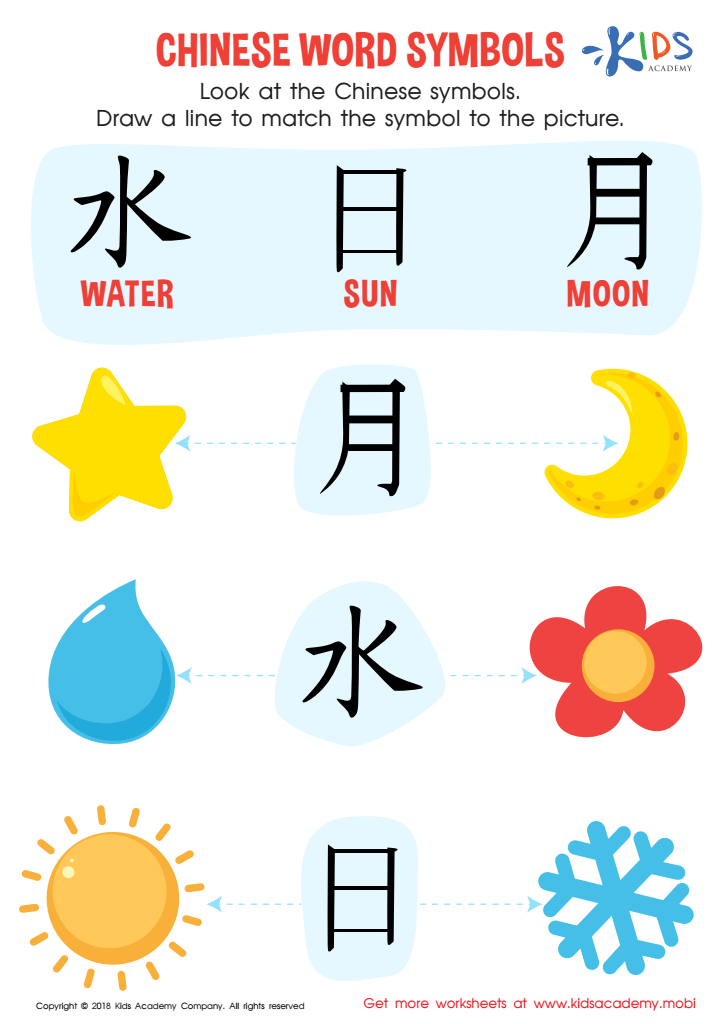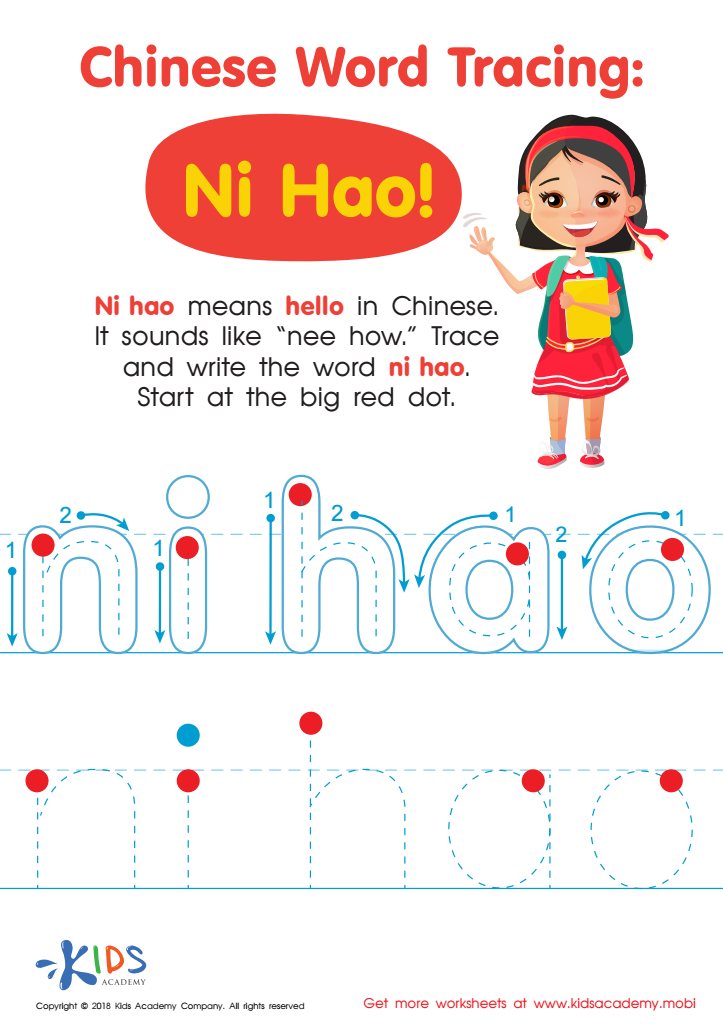Chinese language introduction Worksheets for Kids
2 filtered results
-
From - To


Chinese Word Symbols Worksheet


Chinese Word Tracing: Ni Hao Worksheet
Question/Answer
How to test a Grade 1 student’s Chinese language introduction skills?
To test a Grade 1 student's Chinese language introduction skills, you can conduct a simple oral examination where the student is prompted to introduce themselves in Chinese. This can include stating their name, age, family members, and favorite color or hobby. The assessment should focus on pronunciation, vocabulary accuracy, and the ability to construct basic sentences.
Why is the Chinese language introduction skill important for Grade 1 students?
Introducing Chinese language skills to Grade 1 students is important because it capitalizes on their heightened ability to absorb new sounds and patterns, laying a strong foundation for future language proficiency. Early exposure enhances cognitive development, cultural awareness, and prepares them for a globalized world where bilingualism, especially in Mandarin Chinese, is a valuable skill.
How does the mastery of the Chinese language introduction skill affect a student's performance at an early age?
Mastering the introduction skill in Chinese at an early age significantly boosts a student's performance by enhancing linguistic comprehension, cognitive development, and cultural understanding. This foundational skill fosters confidence in language use, promotes better pronunciation and communication abilities, and sets a solid groundwork for advanced language learning, positively impacting overall academic achievement and cross-cultural competence.

 Assign to the classroom
Assign to the classroom




.jpg)







